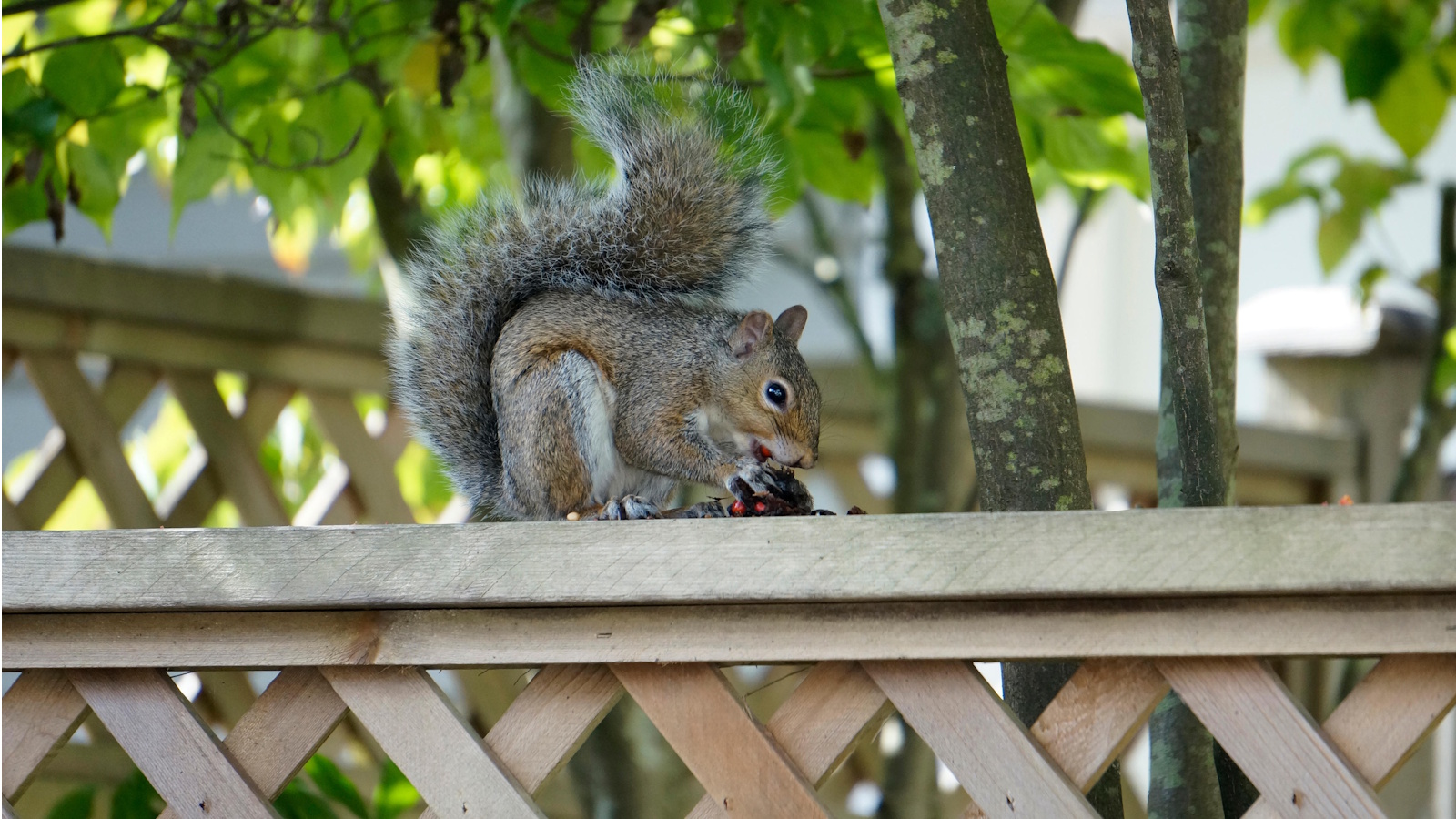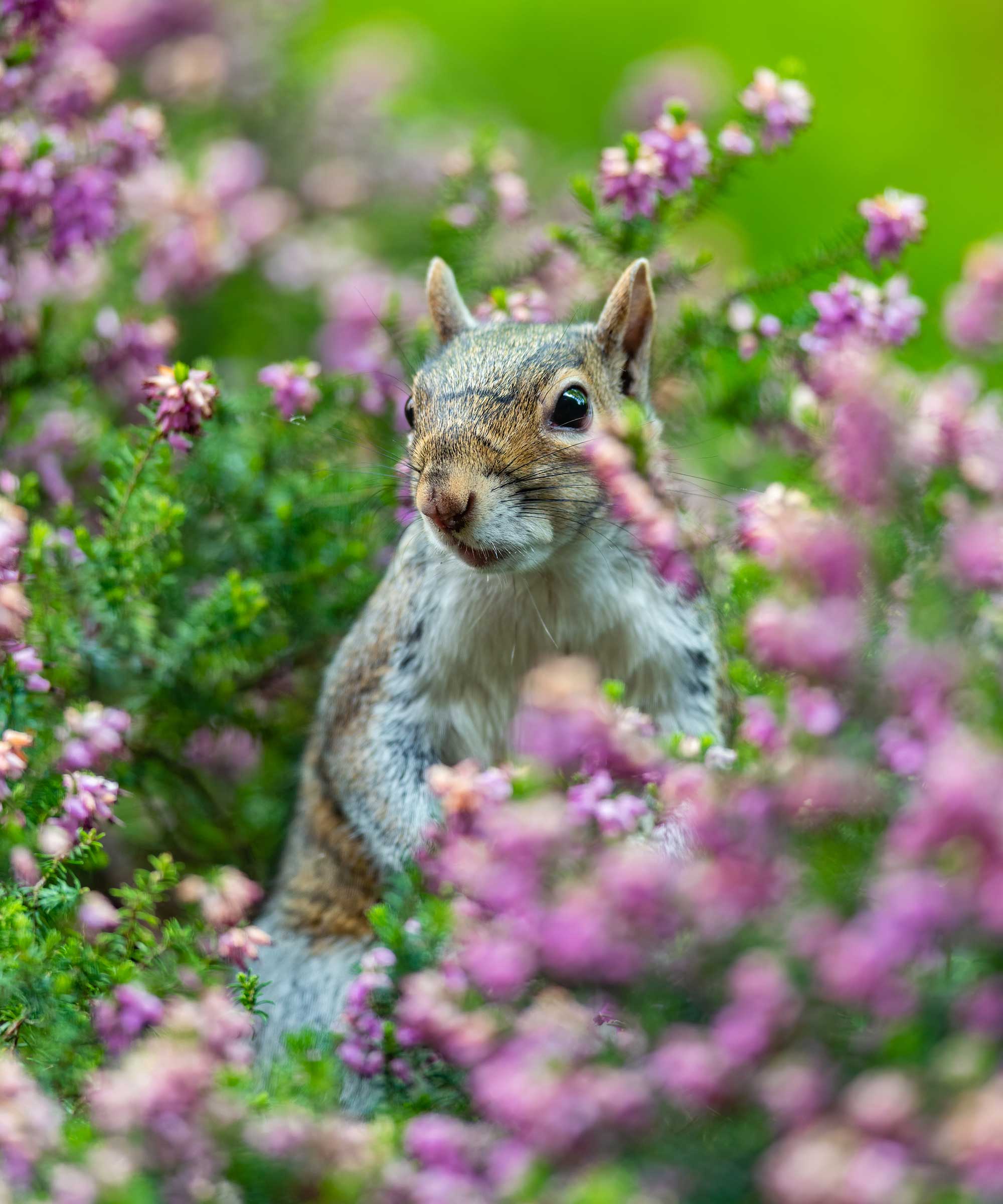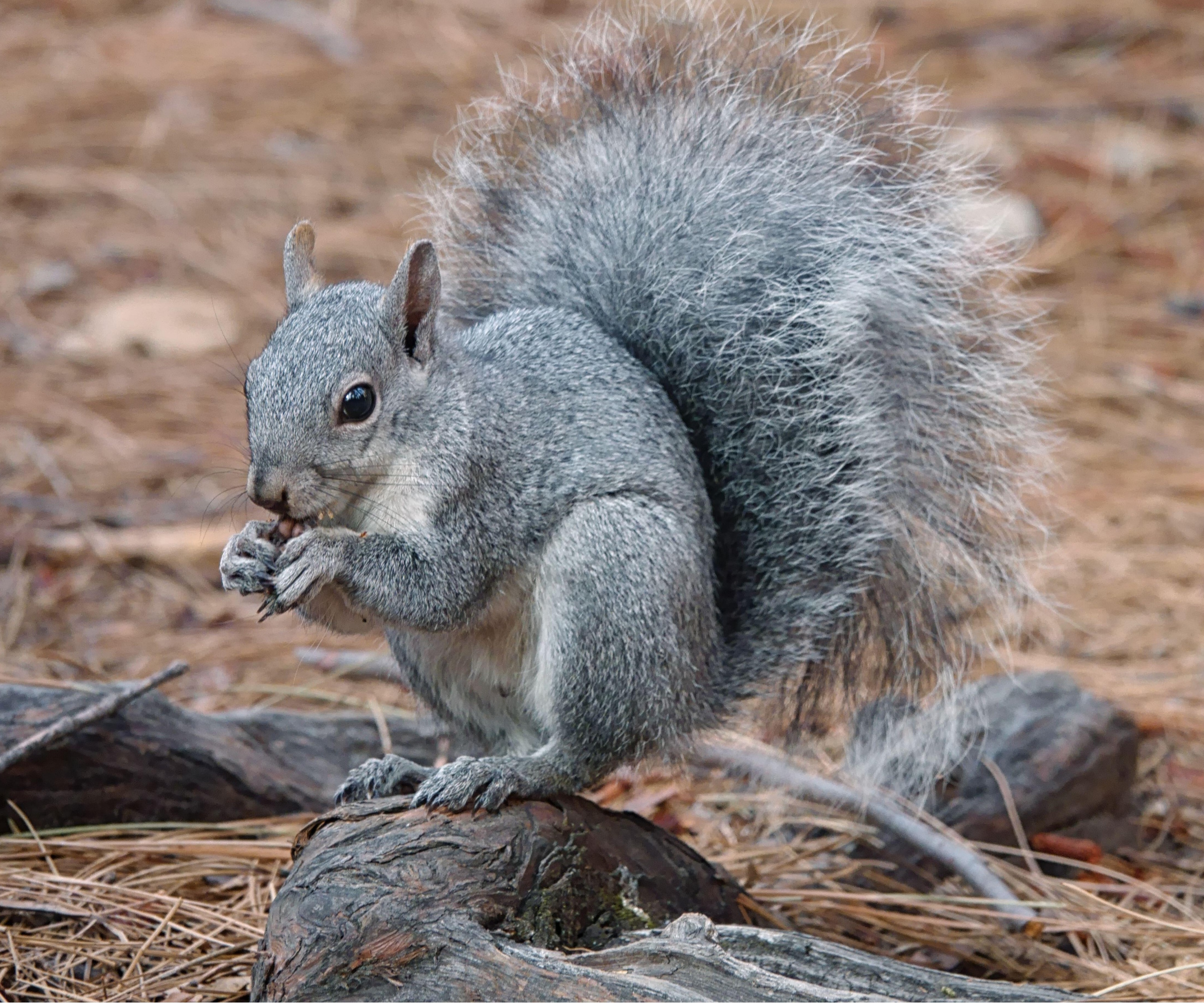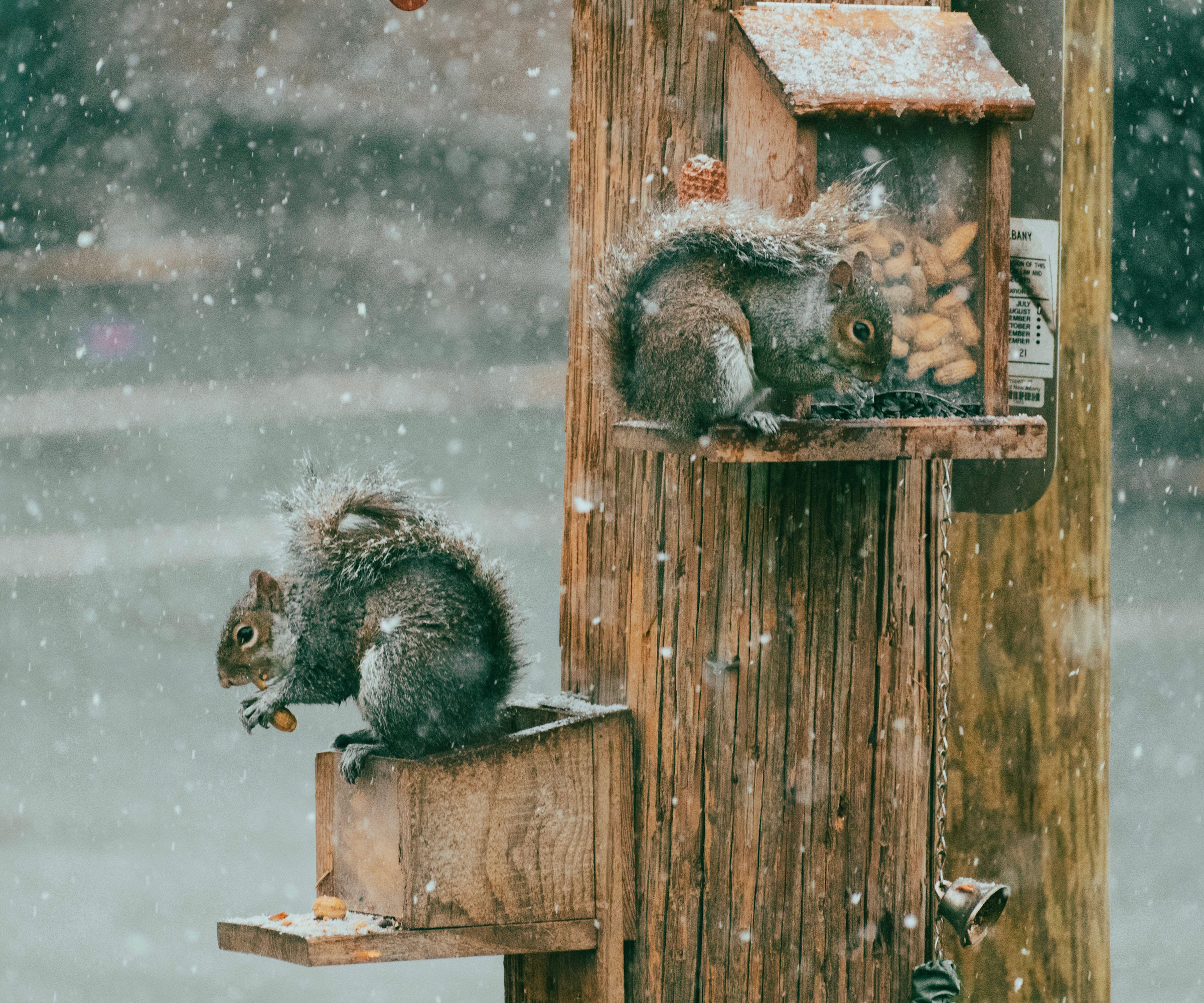
Squirrels divide opinion among gardeners. There's no denying they can be an adorable sight in the yard, but they can also be a nuisance, digging up bulbs and scaring away other wildlife. However, whether or not you welcome these cheeky creatures in your yard, their conservation remains important for the wider ecosystem and biodiversity.
One issue that stands out in particular is Eastern vs Western gray squirrels. The former has become an increasing and aggressive threat to the latter.
If you're already familiar with this situation, you may have adopted efforts to get rid of squirrels. But, it's important to correctly distinguish Eastern vs Western grays. And know how to protect native Western grays, for your efforts to be effective. Here is what you can do to help protect them, and to be sure you know the difference between the two.

Eastern vs Western gray squirrels: what's the difference?
The problem first arose when Eastern grays (Sciurus carolinensis) were introduced to Western states in the early 1900s, and have since been outcompeting Western grays (Sciurus griseus) for food and habitat. Resultingly, Eastern grays are now recognized as invasive in Washington, Oregon, California, and Idaho, although concerning numbers exist in other Western states, too.
At first glance, it can be hard to determine Eastern vs Western gray squirrels because they have a similar appearance. But, there are a few giveaways to look out for when trying to identify which are visiting your yard.
Differences in appearance

Eastern grays tend to be smaller, with a flatter less fluffy tail. Western grays by comparison are larger and have bushy tails. Eastern grays also tend to have hints of brown among their gray fur, while Western grays are much more obviously gray, often with white-frosted edges on their tails.
You can also look at a squirrel's belly to identify which one it is: Western grays have pure white fur, while Eastern grays have white-ish, variable coloring on their belly.
'[Western gray squirrels] also have prominent ears, which can be reddish-brown on the back in winter. This occasional small patch of brown is only visible upon close inspection and is the only part of the squirrel that may have any brown,' describes the Washington Department of Fish and Wildlife(WDFW).
Eastern grays rather have small, rounded ears without any tufts of fur.
'Western gray squirrels are often confused with introduced Eastern gray squirrels that are increasingly common in Washington’ urban areas. The Western gray squirrel's large size, bushy tail, and gray fur lacking any brown on the body or tail are keys to distinguishing it from other tree squirrels in Washington,' the WDFW adds.
What makes Eastern grays a threat?

Western grays have been threatened by Eastern grays ever since their introduction to Western states in the early 1900s. A 2024 study in the Journal of Mammalogy identified a continued decline in the number of Western grays living in human-dominated areas, naming the presence of Eastern grays as one of the driving factors.
This is largely due to the adaptability of Eastern grays to Western grays' habitat.
Western grays prefer oak and pine trees, and are found along the Western coast of the US, primarily Washington, California, and Oregon. Eastern grays, on the other hand, are highly adaptable to urban, suburban, and rural environments, and are therefore able to easily take up residence in the forest habitat of Western grays, pushing them out.
A 2011 study by the University of Washington even found Eastern grays were displacing Western grays from shared riparian areas. It states that Easterns were limiting the available habitat for Westerns overall.
As for food sources, the two squirrels also have an overlapping diet:
'Nuts and acorns are a staple of the [Eastern] gray squirrel’s diet, but they also feed on seeds, fruits, mushrooms, tree buds, and blooms,' says the North California Wildlife Commission.
The reason Western grays are struggling to compete for food and shelter is down to behavioural factors. Eastern grays are thought to be much more aggressive and dominant, while Western grays are much more timid and can become easily displaced.
Not only this, Western grays are becoming physically outnumbered by Eastern grays' more frequent reproduction rate (usually two breeding seasons in a year).
These factors have contributed to Western grays becoming a protected species and even being named as endangered in Washington in 2023. They also continue to be a vulnerable species in other states.
How to protect Western grays from Eastern grays

While eradicating the threat to Western grays requires large-scale action (such as these conservation efforts from the Washington Department of Fish and Wildlife), there are some things home gardeners can do to help these squirrels out.
Focus on introducing native planting, especially trees and shrubs, to provide Western grays with food and shelter. In particular, oak trees (like this white oak tree from Fast Growing Trees) and shrubs with berries (like elderberry shrubs from Nature Hills), are good choices.
You can even try growing an oak tree from an acorn. Use this acorn oak tree kit from Amazon to get you started.
To add further shelter, install a squirrel nest box (like this one from Amazon) on a tree in your yard.
Another way to protect Western grays is by not directly feeding squirrels (it's likely to attract Eastern grays to your yard), and use methods to keep squirrels away from bird feeders. Use this baffle from Amazon to make it more tricky for squirrels to eat from bird feeders, for example.
You can also help government conservation efforts by reporting sightings of Eastern grays. For example, the WDFW is closely monitoring their population and be contacted via their website.
FAQs
Are you allowed to trap Eastern gray squirrels?
Whether you can trap an Eastern gray squirrel depends on local regulations. They're considered invasive in a few states, including California, Oregon, and Washington, all of which allow for trapping to some extent. However, there are some guidelines in place. For example, in Washington, you can use a live box trap (from Amazon) without a special permit, but you can't trap and kill Eastern grays without a hunting license. For this reason, it's important to research the regulations for the area you're in before attempting to trap squirrels.
There are lots of ways Eastern grays are threatening Western grays in some US states, which is why there are conservation efforts in place. If both Eastern and Western grays are causing mayhem in your yard, there are a few humane deterrents you can use. For example, use cayenne pepper to deter squirrels, or these wire cloches from Amazon to stop them digging up bulbs.
Shop squirrel control essentials for your yard
This ultrasonic repellent has a motion detector and emits a sound and flashing light to deter squirrels from your yard.







